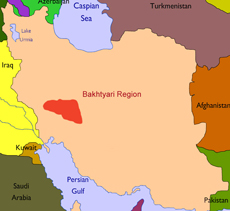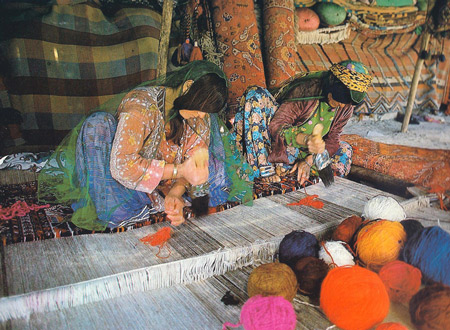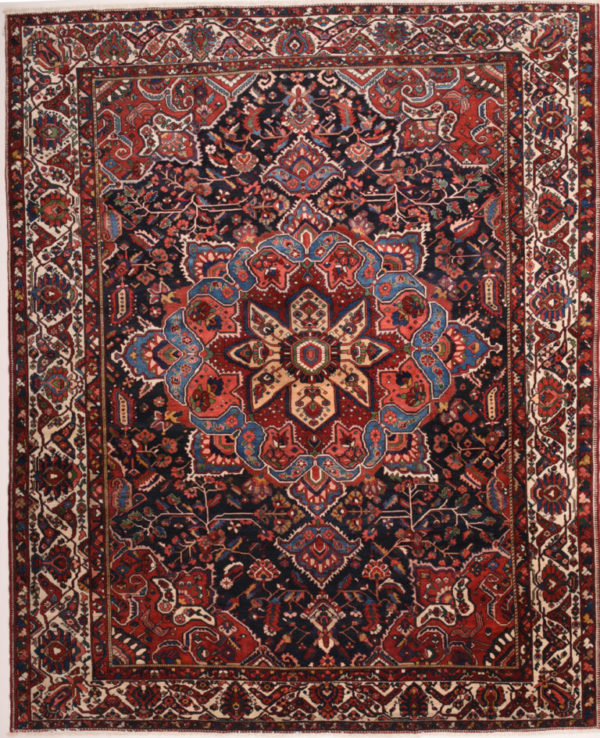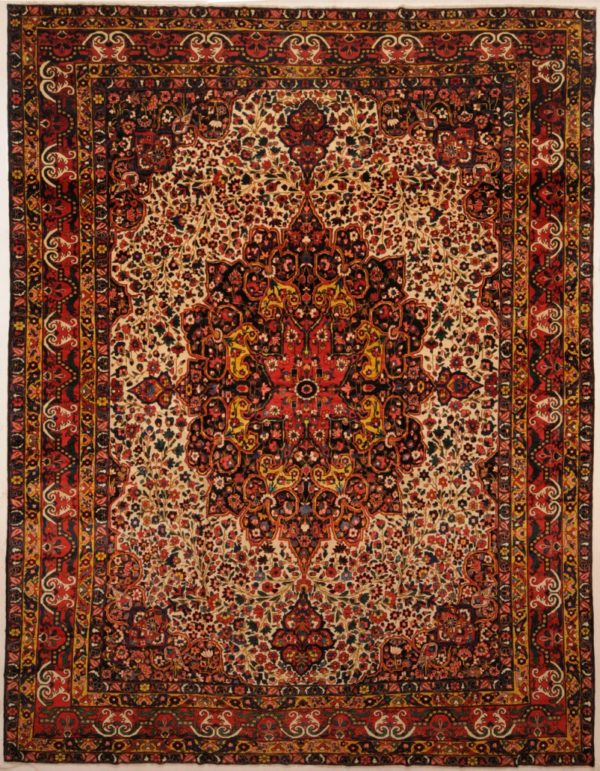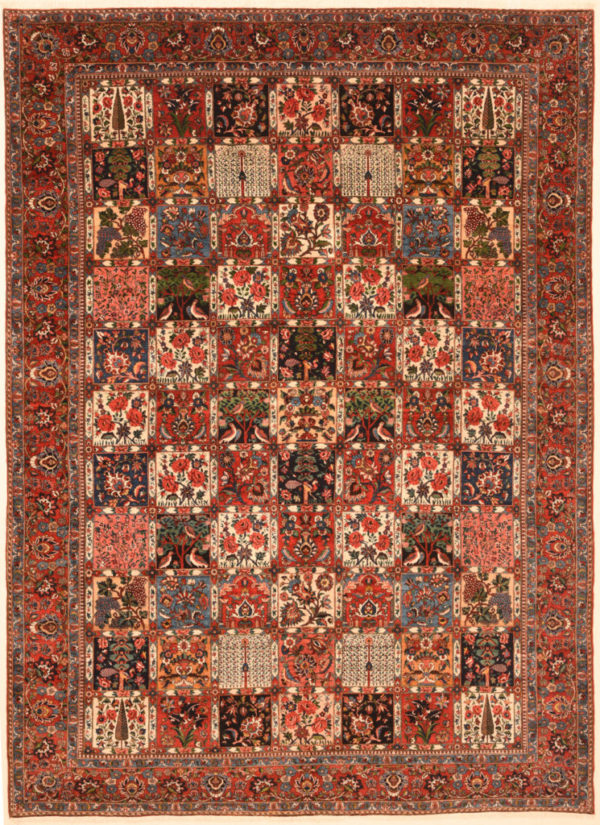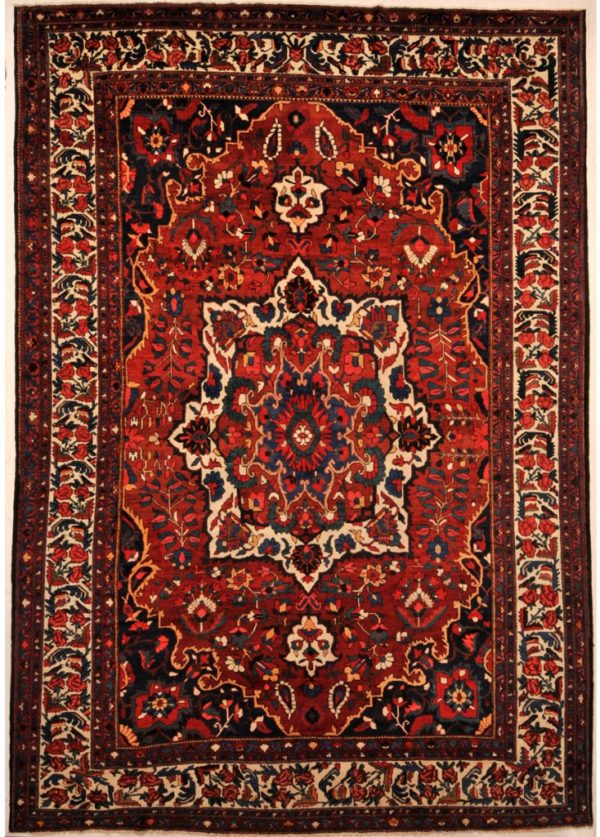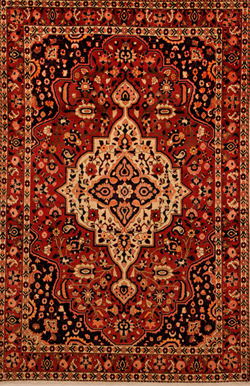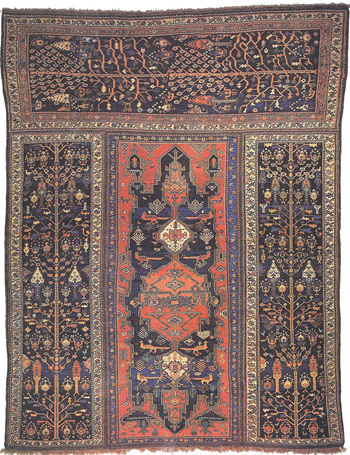Bakhtiari
Bakhtiari Rugs: Reflections Of A Nomadic Lifestyle
Bakhtiari rugs are often immediately recognizable on account of their distinctive pattern which features motifs of roses and an assortment of flora and fauna around a network of squares or garden. The absence of any of curvilinear patterns makes them quite different from most other types of Persian rugs. The Bakhtiari tribe is one of the few weaving groups that traditionally make rugs large enough to be considered room-sized.
A Look At The Bakhtiari Way Of Life
These rugs are woven by the Bakhtiari tribe, famed as much for their lustrous, deep toned rugs as for their perilous annual migrations over the snow capped peaks of the rugged Zagros Mountains. Primarily shepherds and goatherds, these nomads spend the summers in the high plateau pastures and in winter they moved to the lowland plains in the Khuzistan province where grass was still available for their herds. Their migration is considered to be among the most spectacular of any nomadic pattern anywhere across the world.
One of the oldest Persian tribes, the Bakhtiaris were completely nomadic till about the 16th century when they began to establish settlements across the central Zagros Mountains. After settling down, the weavers started producing more rugs and the finished pieces were of a higher quality too.
Designs Of Bakhtiari Rugs
The characteristic Bakhtiari design is the ‘walled garden’ design. This comprises a series of very distinctive square, hexagonal or diamond shaped sections that feature assorted themes from nature. The field of the rug is divided into compartments or panels. Each of these compartments is then filled in with a variety of motifs, from trees-of-life, palmettos, roses and flowers to different animals and birds. The design is actually an adaptation of the matrix formed by irrigation channels, which were found in Persian gardens at that time.
One thing in common is that all of these rugs have extremely busy patterns with every compartment having different motifs as well as different colors so that no two compartments are alike. The finished rug is a complex combination of patterns and colors that is very interesting. It could require several hours just to take in each of the individual design elements. In many rugs, the influence of Aubusson and French carpet making is evident in the roses and the patterns of the rugs.
Construction & Colors of Bakhtiari Rugs
Bakhtiari rugs have a cotton foundation and the wool pile is usually crafted using the wool taken from the tribes own herd. Because of this, the quality and the luster of the wool can differ from one rug to another depending on which village it originated from. These rugs are dense and soli, with durable knots and a medium-high to high pile.
Bakhtiari rugs are very colorful, with the colors used depending on the village of origin. The most common colors used are various shades of ivory, white, red, green, brown and yellow.
